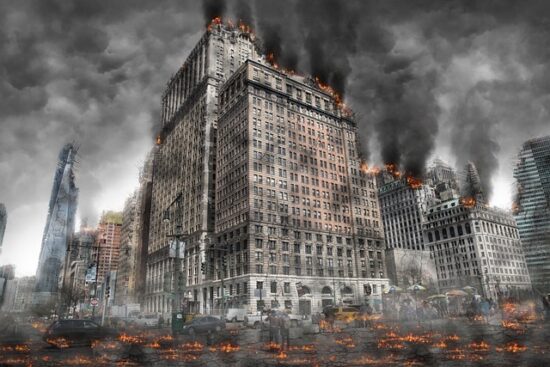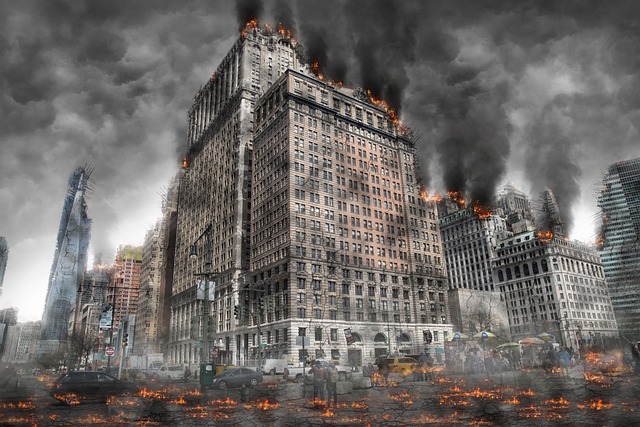World War I was one of those historical events that shaped destinies, altered mentalities and changed the history of many countries. Known as the First World War, The Great War or the War of the Nations, this complex conflict started in 28 July 1914 and ended in 11 November 1918. With the Allied Powers on one side and the Central Powers on the other, World War I was a balanced confrontation, not only in terms of armed forces, but also regarding ideologies and cultures.
The first is always the most memorable. This is why, the First World War or formerly “The Great War” is a war that experts hail as one of the most significant events in recent history. The war went on from 28 July 1914 up to 11 November 1918 and was between the Allies and the Central Powers of Germany, as well as Austria-Hungary. Once it was over and after an estimated body count of 9 million, the Allies won and the rest, as we all say, is history. Despite the fact that part of history or social studies is to educate children, teenagers and adults alike about the First World War, some teachers tend to leave out a few fun facts.
These interesting and fun facts are worth the read and if it piques your interest, read ahead and find out more fascinating things about an already fascinating war between the world’s greatest powers.
Such great conflict must surely bear great mysteries. Outside the known facts, there is a part of The Great War still unknown to most people. So, if you want to find out more about World War I facts for kids, this article will provide you with the most weird and interesting secrets, mysteries and enigmas. You will discover extraordinary facts about the battles, the weapons used, the strategies, the political and military leaders and their ideologies.
World War 1 Facts For Kids
1. Why is it called World War I?
This four-year conflict is called World War I because while most of the battles were fought on European land, the war was extended over every ocean and almost every continent.
2. Why did it start?
The assassination of the heir of Austro-Ungarian throne, Franz Ferdinand of Austria, in the context of an already critical situation in Europe, was the event that triggered the hostilities between the two powerful forces: the British Empire, France, the Soviet Union (until 1918) and the United States of America (since 1917) on one side and Austro-Hungary, Germany, the Ottoman Empire and Bulgaria on the other.
3. Facts in numbers
As soon as the war was declared, countries ready-for-war marshaled their troops. Out of 25 countries from all over the world, the number of people engaged in this war counts up to almost 65 million. The Allied powers lost six million men and The Central Powers approximately ten. Only two-third of the soldiers were wiped out during battles. The other important cause of death among military men was the spread of disease and bad environmental conditions. Sadly, there were also 25 million civilian casualties during this war.
4. Biggest army in the War?
Russia had the biggest army in World War I, with 12 million soldiers. However, two-third of them were either eliminated or lost in battle.
5. Hero soldiers
Both sides had courageous and dedicated military men, with astonishing fighting skills. German pilot Manfred von Richthofen, also known as the Red Baron, had 80 air victories, which means that he single-handedly took down the largest recorded number of enemy airplanes during World War I. Coming close with 75 air victories is Allied Powers French pilot Rene Fonck.
 6. Spies
6. Spies
The well-known and controversial spy of that age was Mata Hari. By her real name Margaretha Zelle, she was a Dutch oriental dancer who became famous not only for her talent and sensuality, but also for the rumors that surrounded her. Thought to be a double agent, she was executed by the French one year before the end of the War.
7. What were the most appalling weapons ?
Gas was one of the most effecting and damaging weapon. The French were the ones to use it for the first time, in 1914. Throughout the War, 1,19, 000 tons of gas were used and almost a million soldiers were gassed and had an awful death.
The Devil Gun is another one of the most famous weapons of this conflict. It belonged to the French and it was a cannon which could accurately shoot at a 4-mile distance.
Big Bertha was a German howitzer. Named after designer’s Gustav Krupp’s wife, it had almost 50 tons and needed half a dozen soldiers to be handled.
Little Willie was the first tank used in The Great War. Only three men could fit in it and it travelled with a speed of almost 5 km/h.
8. The War Was Literally a First in Many Aspects
Not ever in the history of man was a war fought with many technologically advanced weapons. The First World War found itself being the war that introduced Tanks, Fighter Planes, Naval Air Carriers and Flamethrowers into the battlefield. It was also the first war to involve the use of chemical weapons such as mustard gas.
The technology used during that war is not likely to turn many heads today, it is important to note that knowledge on how to counteract such weapons was close to non-existent during those times. Hence, the body count is most likely a direct result of the use of such weapons of war.
9. There Was a Time of Peace during World War 1
Despite the fact that it was a time of strife and war, there was a day wherein soldiers of Germany, England and Britain shared songs, drinks and was at peace with each other. Yes, soldiers of warring sides and they were in the middle of the battlefield.
This day was on the Christmas of 1914, wherein German Soldiers paid due respect to the Holiday, greeted the English and British soldiers, and they were greeted back. They exchanged cigarettes, food, and even played a game of soccer.
Yes, the war continued just a day after and the warring sides continued to wage war against each other. However, it is glad to know that during the four years of First World War, soldiers actually found peace and serenity.
10. The United States Was a Late Comer
Contrary to popular belief and impression that the United States was one of the first to wage the First World War, the Nation was actually a late comer. It was rarely involved in the first few years of the War and only joined during the first half of 1917. Not only was it a latecomer, it did not participate in it for long and that just after eight months, the United States asked its soldiers to retreat from the battleground, therefore resulting to them withdrawing from it entirely.
11. What does “blitzkrieg” mean?
Blitzkrieg is a tactic used by Germans which means “lightning war”. The Germans would attack like greased lightning with a compact and very mobile force, combining tanks, airplanes and submarines.
12. Aftermath
The end of First World War also meant the end for four great empires: German, Austro-Hungarian, Russian and Ottoman.
Britain lost its economical lead because of its hefty debts and France also struggled to recover.
The Peace treaty of Versailles humiliated Germany, which was stripped of Alsace, Lorraine, Silesia, Rhineland and other territories and forced to pay war compensations. All the great powers involved in the treaty were unsatisfied at some level, which set the stage for a new great war.


Leave a Reply